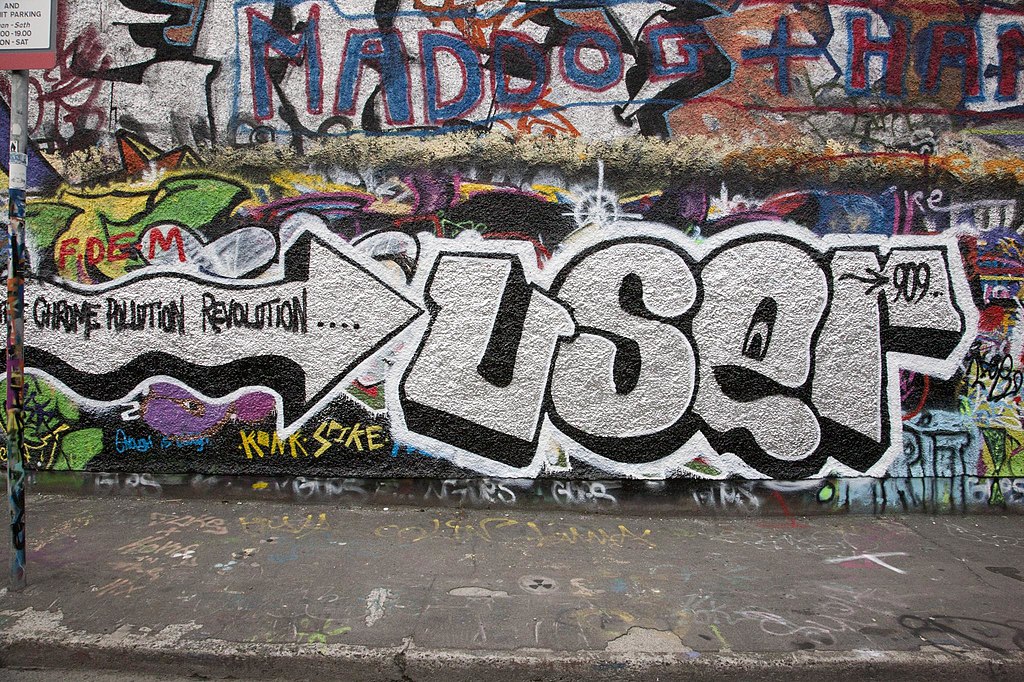During a recent early evening taxi journey along Camden Street, Wexford Street, Redmond’s Hill, Aungier Street and Dame Street, I was struck by the vibrancy of the pedestrian traffic and the number of businesses getting ready to play their parts in Dublin’s nightlife. I was aware that concerns had previously been expressed about night-time disorder and delinquency on the same urban axis. But at 6.15pm, all seemed well and the vibe was good.
What also struck me was the proliferation of graffiti on the street-level facades, street furniture, on laneway walls, and on roll-down window shutters. It gave the scene a visual squalor that these vibrant streets did not deserve.
Why do we colloquially euphemise the people who carry out the systematic disfiguration of our streetscapes by calling them “graffiti artists”? There is a world of difference between the works of Banksy and the moronic squiggles of black spray paint known as tags. I have no problem with controlled use of available gable-ends for high quality street art. I think that it can be uplifting and can convert blank drab wall space into something like a street artist’s canvas. There have been many good examples of such street art in recent times.
Obviously, it can’t be a free-for-all where everyone is free to use anybody else’s property for creative street painting without permission. Just as you can’t paint the brickwork of a Georgian house in Merrion Square or Henrietta Street in red and yellow stripes simply because you own it, there have to be some constraints on where and when it is legitimate to use urban wall spaces for street art.
It is notable that many of the more vocal proponents of creating more urban pedestrian areas and open spaces are strangely silent about graffiti and seem to fudge the distinction between what could fairly, if liberally, be classified as street art on the one hand and plain spray-pained disfigurement of such urban areas on the other hand.
Sad people spraying their tags in the form of initials or other monikers on every available surface by night simply isn’t art by any definition. It’s moronic.
But if you google the subject, you will find that tagging with spray paint is becoming some form of urban sub-culture for an alienated, vacant-minded and artless band of urban delinquents. The more ambitious members of this band even go to the trouble of carrying collapsible ladders so that they can scale walls and roofs to leave their mark. None of the aerial stuff has any arguable merit. It simply disfigures urban landscapes. Destroying visual amenity for the many by such acts is a gross form of selfishness.
Understanding alienation of the spray painters may be suggested by some. But how are we then supposed to identify them in order to engage with them?
The desire that their spray paint vandalism should be seen by the greatest number of city-dwellers impels many of them to seek out wall spaces that can be seen from the Dart, the Luas and railway and canal lines. It isn’t simply a matter of using those routes for access. Homes, shops and offices well back from the tracks are selected precisely because they can be seen from passing trains and vehicles.
Spray-painting someone else’s property is not merely trespass; it is malicious damage and criminal. The Gardai say so on their websites and advise people who see it being done to report it to their local Garda stations.
Creating urban squalor by spray paint is not a victimless crime either; it is absolutely at loggerheads with urban regeneration and renewal. Property owners and lessees know that. cleaning away graffiti is both costly and futile.
But surrender is squalid too. Defaced trains on the London Underground sink commuters’ hearts daily. The Journal.ie reported
last year that Gardai had identified two suspects who had between them used graffiti to cause damage of more than €250,000 to Dart rolling stock and infrastructure. I was once informed that one serial perpetrator was a junior academic in his thirties!
Politically correct Dublin City Council offer online to remove graffiti but only where they are “racist offensive or political”.
Many people must fantasise about retaliation – find out where the sprayers live and do a little graffiti art at their homes or brighten up their bedrooms.
Alas the Gardai have other things to do to improve urban living – such as patrolling streets and preventing violence, bicycle thefts, and other disorder.
Maybe, community service orders should routinely require petty convicts to take part in graffiti removal exercises. Maybe more street cameras and camera surveillance of vulnerable places could help.
At the very least we should stop referring to moronic spray paint tagging vandals as graffiti artists. Opinion influencers in the media should not stay shtum about those who deliberately create squalor and disfigure our towns and cities. Banksy they are certainly not.
Photo credit: infomatique, CC BY-SA 2.0 <https://creativecommons.org/licenses/by-sa/2.0>

